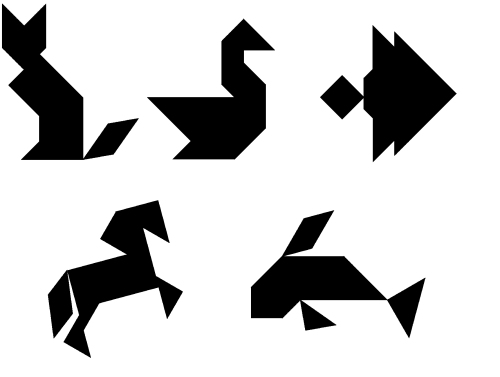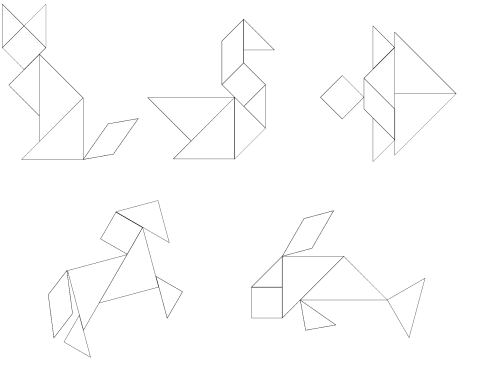Puzzles are an excellent way to develop your problem solving skills and have fun at the same time. The Tangram Puzzle is a classic puzzle from China which involves rearranging 7 pieces cut from a square into various pictorial representations of real-world objects such as animals and people in different postures.
Some example shapes are shown below.

One thing that makes the puzzles challenging is that there are so many different way the pieces can be arranged.
Over 6500 different tangram problems have been created from 19th century texts alone.
Tangram Puzzle Online
You can have a go at the puzzle here using the GeoGebra implementation below.
Here’s those shapes again:

Solutions
Once you’ve had a go you can check out the solutions below.
Have fun and exercise your brain with these puzzles
As an Amazon affiliate I earn from qualifying purchases.
Puzzles and Algorithms
One of the things that makes puzzles so appealing to many programmers is that they often have solutions which are amenable to solution by algorithm, or have algorithms associated with them for developing an AI player. For example, creating an AI player for Tic-Tac-Toe, Mancala, Go, Chess, Nim and many others can be approached using the powerful Minimax algorithm. In some puzzles and games where there are too many permutations of play to reasonably work with even for a powerful computer, probabilistic methods such as Monte Carlo methods can be used.
In my experience, the kind of thinking I use, and the enjoyment I get from solving puzzles and writing computer programs is similar. I expect this may be true for you too.
In many ways solving puzzles and writing programs have the feel of a detective story for me, and I can feel like Sherlock Holmes solving a difficult case – it can be very satisfying!
This post has show the Tangram Puzzle and given some justification for spending time messing around with puzzles. I hope you found it interesting and helpful.
Happy computing!

